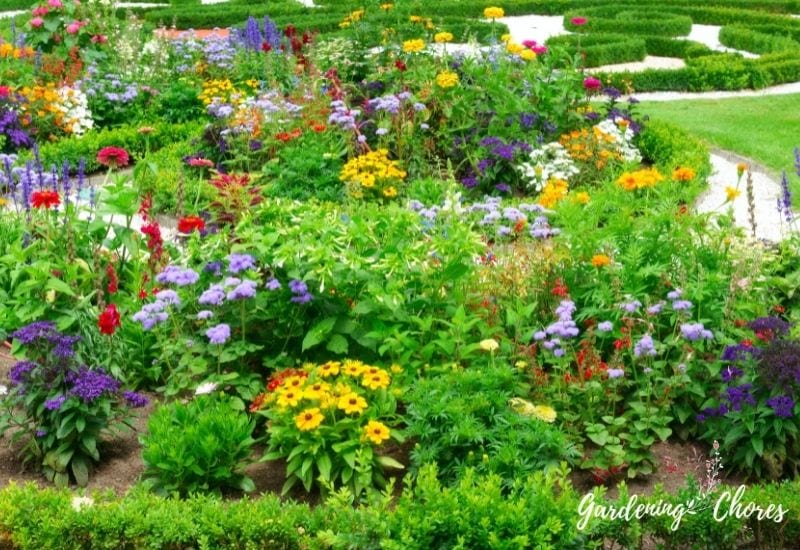
Read a plant description and you will find “annual”, “perennial” or “biennial” next to “flowering”, “evergreen” and other data about the variety. But things get a bit more complex when you read “hardy perennial” or “soft perennial” for example…
And I understand your confusion when you read “perennial grown as annual”… In this maze of plant descriptors and definitions, you may wondering how do annual, biennial, and perennial plants differ?
Annual plants live just one year from seed to death, while perennial plants live for more than two years. They return year after year and continue growing until they reach maturity, which varies by plant but averages three to five years. Then there are biennials which takes two years to complete it’s life cycle, It will germinate and grow, survive through one winter, and in the second year it will grow more, bloom, and die.
But the lifespan of the plant may also depend on soil and climate conditions and each group has particular gardening functions, with advantages and disadvantages.
For a good garden you’ll need annuals, perennials and maybe some biennial plants too. But there are different types and they have different uses in gardening.
And we want to show you all the differences among them in detail, like a real pro. What’s more, we’ll learn how to use them correctly and creatively, like an expert gardener!
The Life Cycle Of Plants: Annuals, Perennials and Biennials
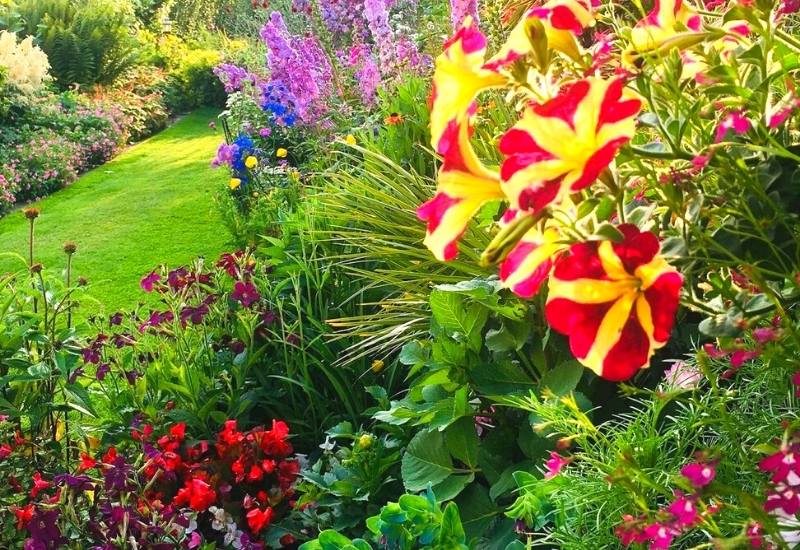
You need to understand what we mean by “life cycle” of a plant or species to have an exact idea of what it means that your chosen variety is an annual, perennial or biennial.
The life cycle of a plant goes from germination to death. That seems easy enough, ok, but there are many stages and phases within this cycle. Let’s look at them in detail.
Germination
Germination is when a seed starts growing roots and stem, with the first one or two leaves. It will have two leaves, called “cotyledons” if the seed is divided into two sections; it will have one leaf if the seed is in one only part.
Vegetative Phase
After the plant germinates, it will spend all its energy growing roots, stems, branches and leaves. This is called the vegetative phase. This can be short or long. For example, very often (not always) annuals have a short vegetative phase and a long blooming phase. Look at cosmos, sweet peas or even sunflowers!
Actually the last one is a good example. Sunflowers grow very fast and very much, and they can reach 6 or 8 feet in height (1.8 or 2.4 meters) in a matter of weeks! But then the flowers come and they stay there for weeks if not months.
Reproductive Phase
When the plant blooms and then fruits and produces seeds we are in the reproductive phase. Look at sunflowers and it’s easy to see!
Plants usually stop growing altogether or they slow down during the reproductive phase. Sunflowers stop, for example, perennials tend to slow down, but still, the effort is in reproducing.
Dormancy
Dormancy is when the plant “goes to sleep” or to rest. It stops growing and making flowers, fruits or seeds altogether. This is usually in winter, but not always…
And here there is one fact you need to know: annuals do not have a dormant phase. They die at the end of the reproductive phase.
Biennials and perennials often have a dormant phase, then they start growing again, with a new cycle that starts at “phase 2”, with the vegetative phase.
Finally, not all plants go through these phases in the same order; we will see that some biennials and some perennials skip the reproductive phase till the very end of their lives, and they go through a series of vegetative and dormant phases, for example.
But now you have the key concepts we need to use let’s move on. Let’s start with annuals, then perennials and then we will look at the “group in between”; biennials.
What Is An Annual Plant?
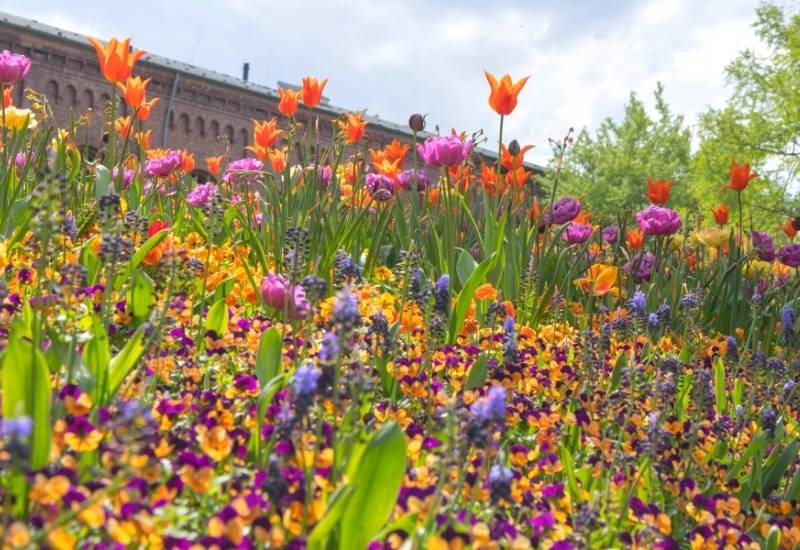
Annual plants have only one life cycle and it happens within roughly one or less than a year. This is the definition, and it already shows you that they may live much less than a year. Some types of lettuce can go from seeding to bolting in a matter of weeks.
Annuals complete their life cycle in just one growing season before dying and come back the next year only if they drop seeds that germinate in the spring. Although some can drop their seeds and flowers appear the following year
If you are new to this term, it is when a vegetable tries to produce seeds. It is used for leaf vegetables, and it’s the end of your crop…
In any case, annuals take their name from the Latin “annuum” which means “year”. Most annual plants live less than one year.
Take sweet peas, some of the most generous annuals ever; you plant them in spring and by late fall they are fully spent. But in these few months, they have regaled you with a sweet smelling bloom that lasts months!
In fact, one of the interesting things of annuals is that many spend most of their time flowering! Annual poppies, cornflowers, sunflowers, zinnias, annual marigolds… they are all famous for their long blooms!
Types of Annuals
But even within annuals, there are some details we need to know. When you read a plant description for annuals you will see terms like “hardy”, “tender” or “half hardy”… What do these mean? Let’s see.
Hardy Annuals or Cool Season Annuals
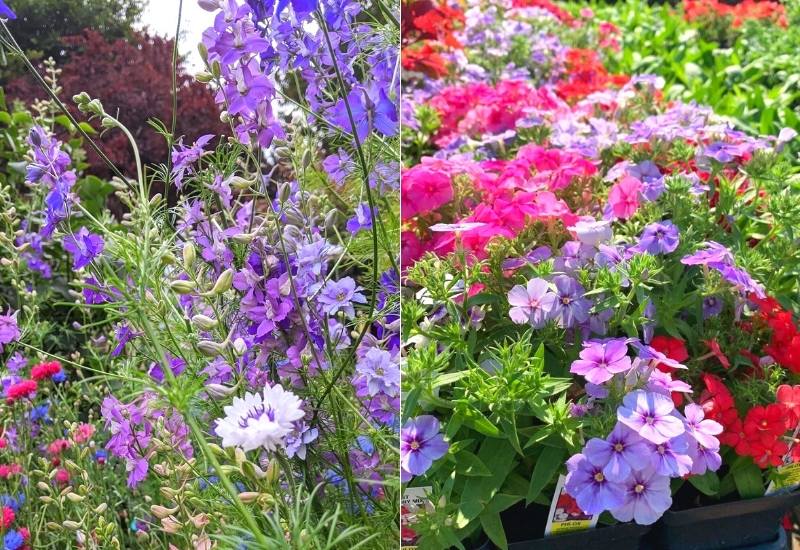
Hardy or cool season annuals are plants that like fresh and cool conditions; these are not “hot summer flowers” like sunflowers, but species like forget me not or larkspur. They usually give their best in spring or fall, and they can tolerate cold temperatures, even frost.
Tender Annuals, or Annuals for Warm Season
Tender annuals are those you can only grow when the weather is warm, from late spring to early fall, depending on where you live. Many vegetables are warm season annuals, first and foremost tomatoes!
Sunflowers, zinnias, and annual geraniums are all tender annuals. These will not tolerate frost and very cold temperatures.
Half Hardy Annuals
Half hardy annuals are plants that can manage fairly cold temperatures but also warm ones, like marigolds, cosmos etc. They are the most common group pf annual flowering plants.
USDA Zones, Hard, Tender and Semi-Hard Annuals
Have you ever wondered why you still get the USDA zine descriptor for annuals? True, it is not as important as with perennials, but… Especially if you want to grow a tender annual, you will need to make sure that you plant it when the weather is warm enough.
Similarly, if you live in a very cold region, you will need to be careful about which hardy annuals you can grow, as it will grow when the season is not yet warm…
What is more, very experienced gardeners grow know that the season of an annual does change according to the USDA zone you live in. I was surprised to find what I though as “spring flowers” in full massive bloom in January (!!!) when I first visited the sunbathed island if Sicily in the Mediterranean!
Perennials and Biennials Grown as Annual
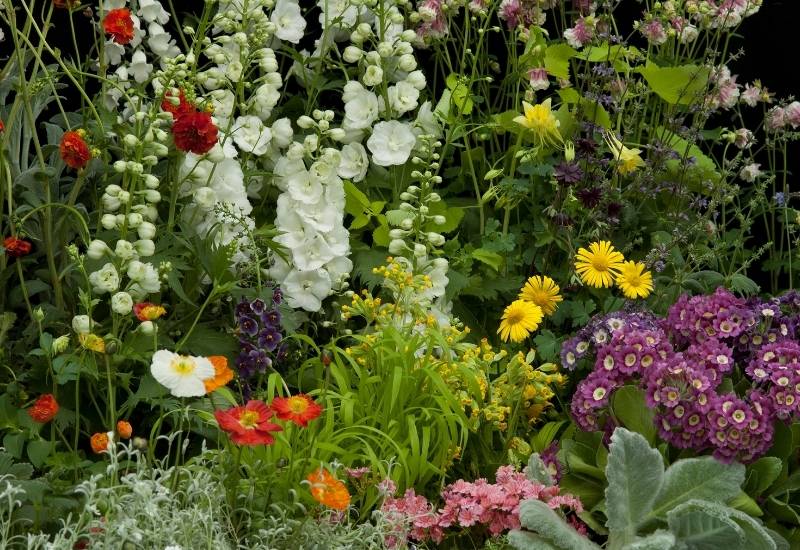
When you look at descriptions of plants like petunias online, in magazines and books, you often find “grown as annual”. What does it mean?
It means what is says, that in Nature, it is not an annual, but that gardeners treat it as if it was an annual. Petunias are biennials, for example, but many biennials give their best in the first year. Have you ever seen what petunias look like in the second year? Fewer flowers and lots of dry leaves on spindly stems…
Another reason to grow biennials and perennials as annuals is that the weather is too cold for these plants. You can grow many warmth loving herbaceous perennials and biennials in cold regions, and they will simply die off when it gets too cold.
Peppers, for example are perennials, but they won’t survive winter in most countries. Pansies are tender perennial beauties that many people grow as annuals, just because winters are too cold. We will meet these again briefly…
Gardening with Annuals
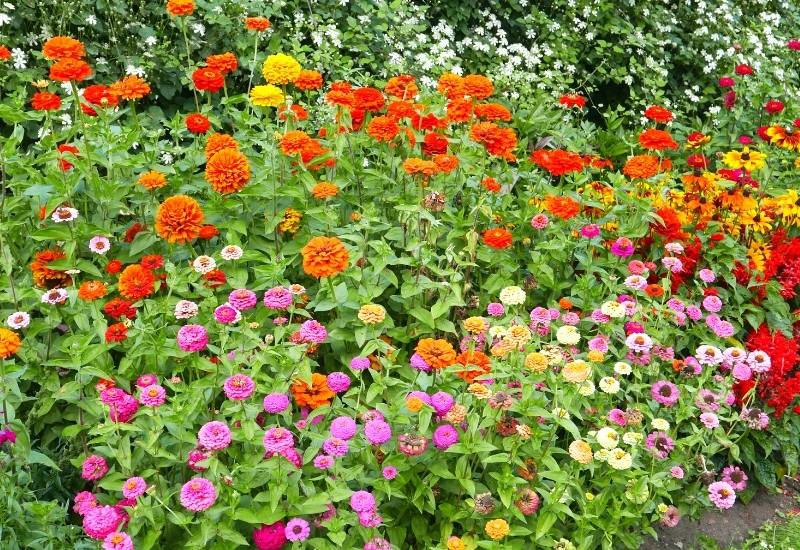
Why should we choose annuals for our garden? Let’s see how we can use these short live plants in our garden.
And now we have seen annuals, it’s time to look at perennials.
What Is A Perennial Plant?
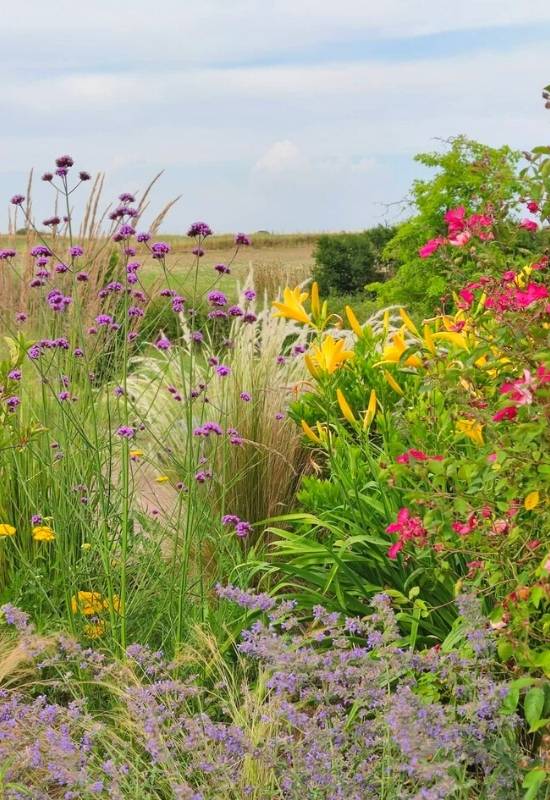
We call perennial any plant that lives more than 3 years. Perennials also have many, repeated cycles and most go into dormancy.
Perennials are by far the largest group of plants in decorative gardening. In Nature there are many more annuals than those we use in gardening.
We do use them, but in mixes, like “wild meadow mix”… We could easily say that much more than 95% of all decorative plant varieties are perennials.
How long can a perennial plant live? Even thousands of years… The oldest tree in the world is an Antarctic Beech in Australia with the very venerable age of 12,000 years!
How long a perennial plant or tree lives is quote important. Some only live a few years (three even)” some will be with you for many years, some will outlive you, your children, grandchildren, great grandchildren… You got the idea!
Type of Perennials
So one way of dividing perennial plants is by how long they live.
Short Lived Perennials
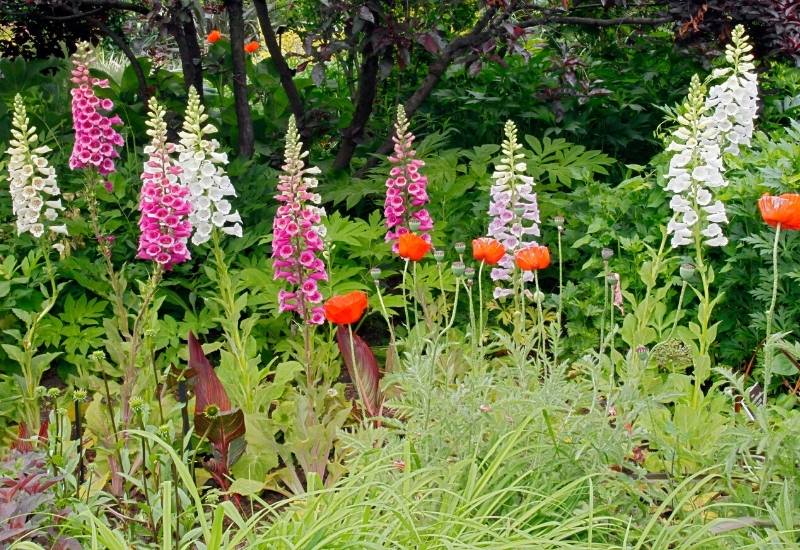
Short lived perennials are plants that live a few years. It does not have a clear cut life span, but roughly less than 10 years. Some people even mean “up to around 5 years”.
Plants like dianthus (pinks), hyacinths, tulips, blanket flower (Gaillardia x grandiflora), coral bells (Heuchera spp.) and similar plants are short lived.
So, a short lived perennial will keep going for a few years but it won’t be with you forever. What is more, short lived perennials will become less vigorous in the last few years, also with their blooms.
Do keep this in mind, because your border will not look as great with them like in the first few years.
If you can, however, instead of uprooting them and wasting their last few blooms, put them in a “less important” place. They will still thank you with lots of flowers.
Perennials with Middle Length Lives
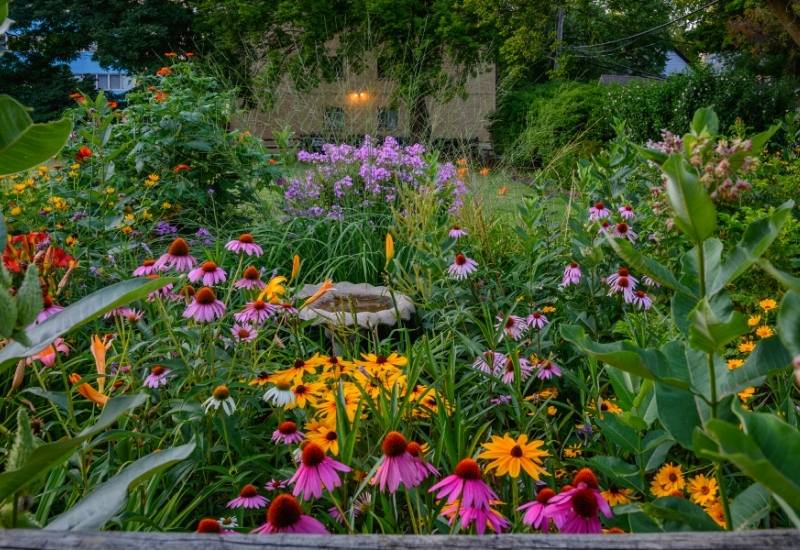
Perennial plants that live more than ten years but only live for a few decades are called “perennials with middle length lives”. You will find this expressed with variants in description, like “middle lived”, or “medium life perennials”. But the concept is the same.
Many fruit trees fall into this category; they will usually live 10 to 30 years on average, and I am talking about peaches, nectarines, plum trees, even many cherry varieties won’t live longer than 30 years.
Decorative plants in this category are lavender, roses, and mandevilla, for example.
Long Lived Perennials
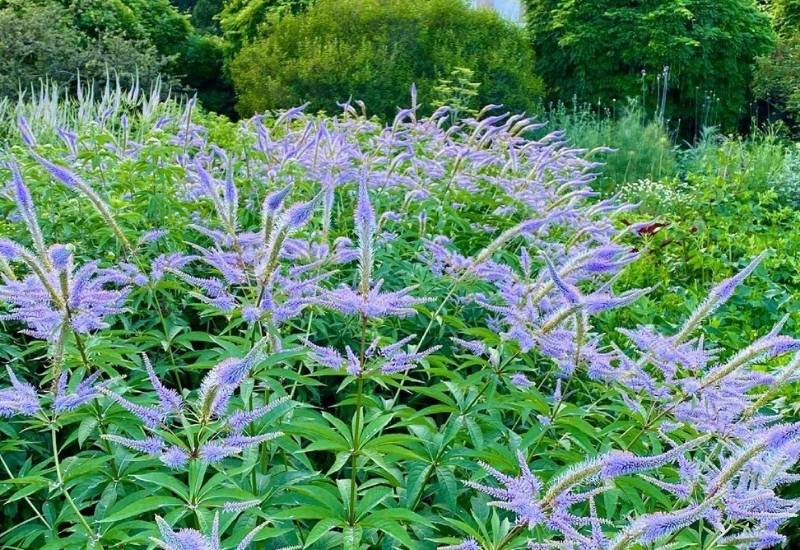
A long loved perennial can last more than 30 years. As you know, this can even mean hundreds, or thousands of years, this is often the case. Olives, oaks, pines, etc. are all long lived.
But you will also find many unexpected and very “delicate” plants with them, like azaleas, gardenias, camellias and hydrangeas!
But the length of your perennial life is not the only way we divide them… We also divide them in polycarpic and monocarpic perennials.
Polycarpic Perennials
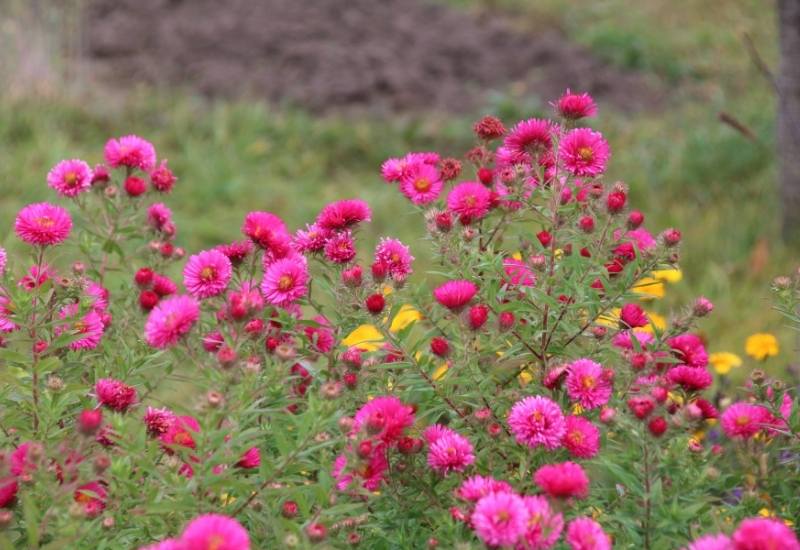
Polycarpic perennials will bloom many times. They go through several reproductive phases. Usually these are regular every year.
So, plants like roses and even daffodils come back with a new bloom every year till they die. They can even have more than one bloom, like wisteria or some roses, in fact.
Monocarpic Perennials
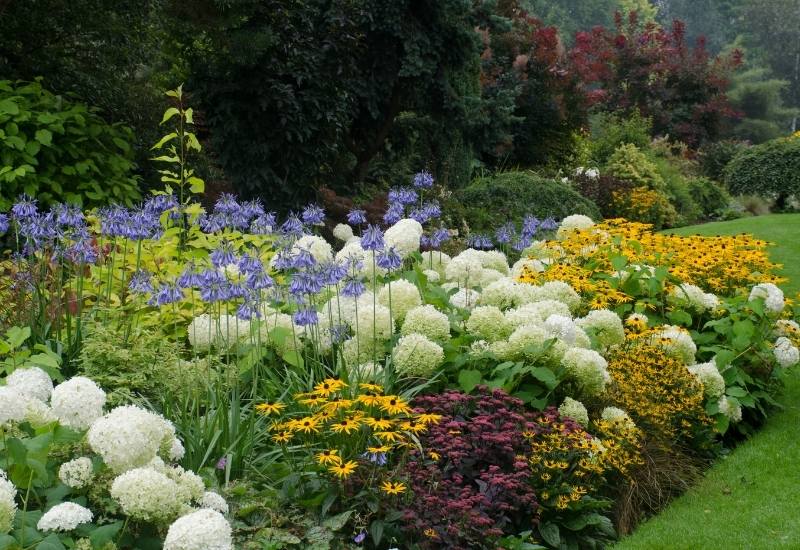
Monocarpic perennials instead skip the reproductive phase till their last year and they bloom only once; then they die. The most famous monocarpic perennial is agave; it will keep growing for decades and you won’t see a single flower.
But when you do, you know your old plant is leaving you… It will produce a long stalk, called “quiote” and when the bloom is spent, so is your perennial succulent.
Finally, perennials are classed as “hardy”, “semi-hardy” and “tender”, just like we do with annuals. This refers to the hardiness of perennials.
Hardy Perennials
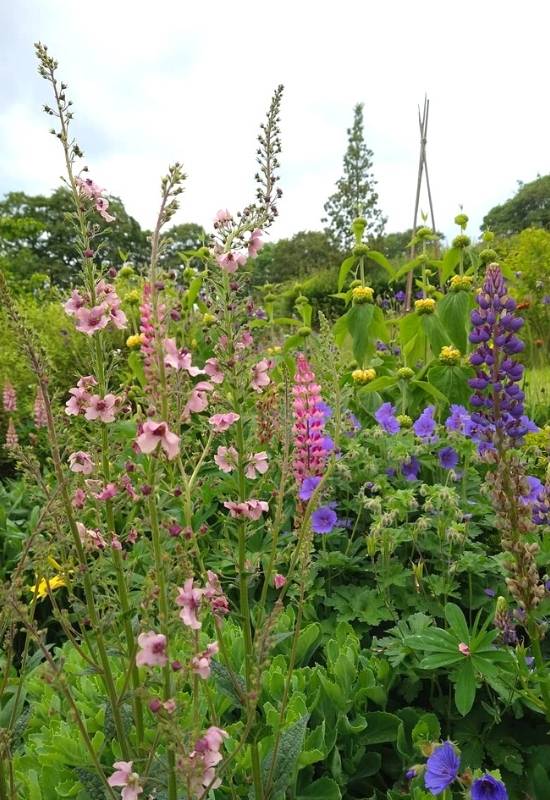
A hardy perennial is a plant that can withstand regular and prolonged periods of freezing temperatures. Some can manage ultra freezing temperatures, others a bit less.
If you really live in a very cold area, the hardiness of the perennial is very important, and your choice is limited by it.
Use USDA zones to decide which perennials can grow in your area.
Semi-Hardy Perennials
We call “semi hardy” any perennial that can survive short periods of moderate frosty temperatures. This means that these plants will usually survive mild winters, but they will die in a cold winter.
Tender Perennials
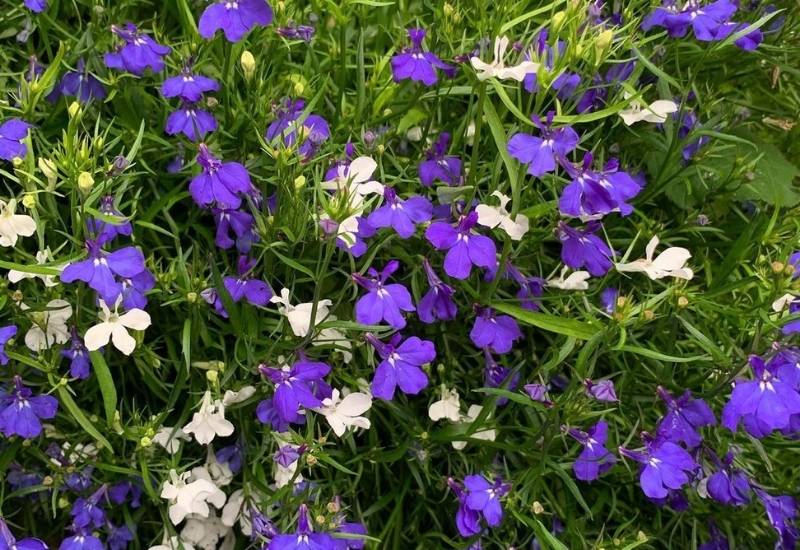
Finally, perennials are called “tender” if they cannot survive any freezing temperature. These are plants you can grow as perennials in places like Mexico, California or the Mediterranean area.
Many tropical plants are tender perennials, so are pansies and even peppers. Tender perennials are often herbaceous. But what can you do if you live in a cold country but you still want to grow a beautiful tender perennial violet?
Gardeners often grow tender perennials as annuals in cold countries! You will just have to plant them again next year. And some are even self seeding!
Gardening with Perennials
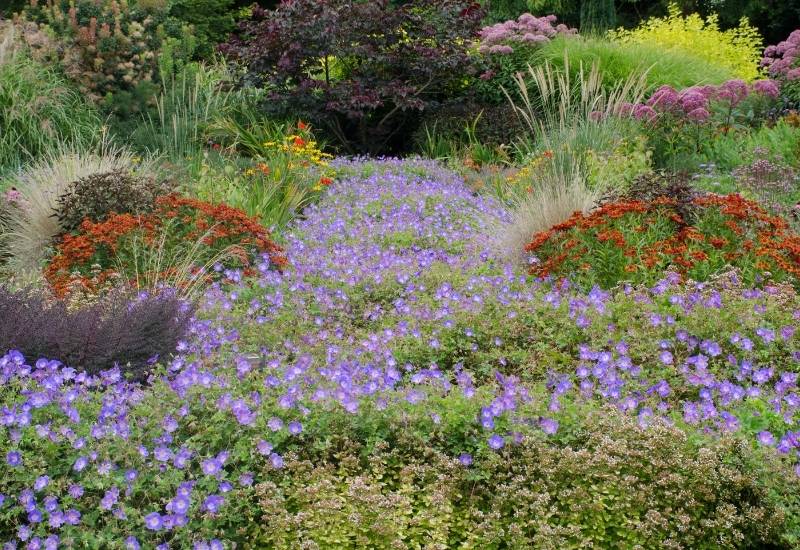
What are the main uses of perennials in gardens? They are actually very, very important indeed!
What Are Biennial Plants?
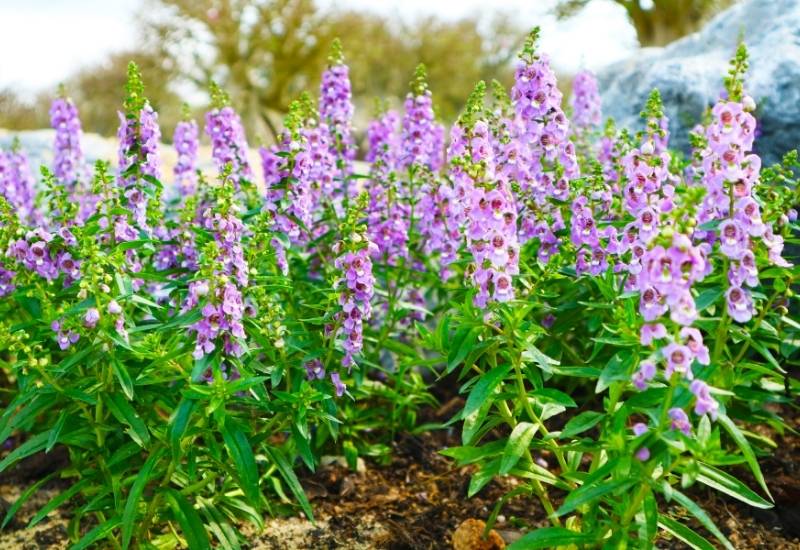
Any plant that lives over two years only, but not linger than this, is a biennial. It will germinate and grow, survive through one winter, and in the second year it will grow more, bloom, and die.
Relatively many plants live for two years, for example lady’s glove (Digitalis purpurea), some larkspur varieties, some columbines, and of course, foxglove, hollyhock, sweet William and petunias.
When I say “fairly large” I still mean that this is the smallest of all categories, but it looks like Mother Nature chose “two years” as a basic pattern.
Types of Biennials
There are two main groups of biennials.
Polycarpic Biennials That Bloom Both Years
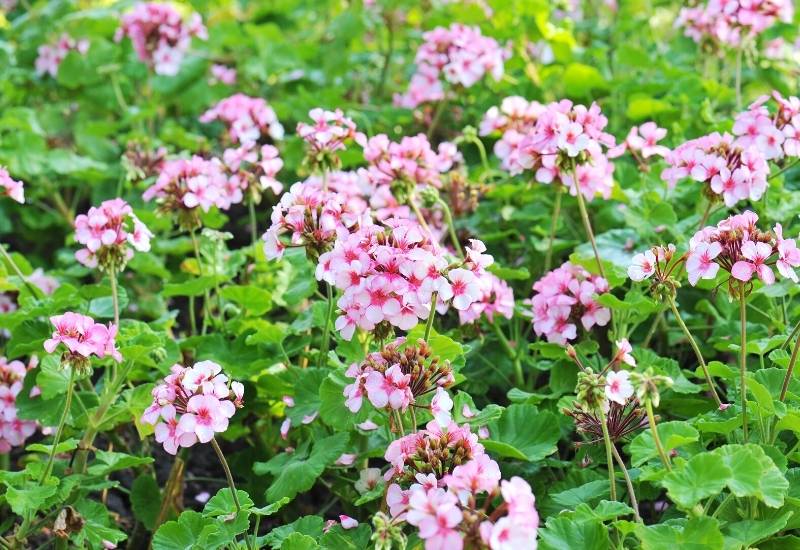
Most biennials will bloom the first year and them the second year too; these are polycarpic plants.
In this case, the second bloom is usually smaller than the first one. Petunias and lady’s glove are examples of these.
These have a life cycle with these phases: germination, vegetative phase, reproductive phase, dormancy, second vegetative phase and final reproductive phase.
Monocarpic Biennials That Only Flower the Second Year
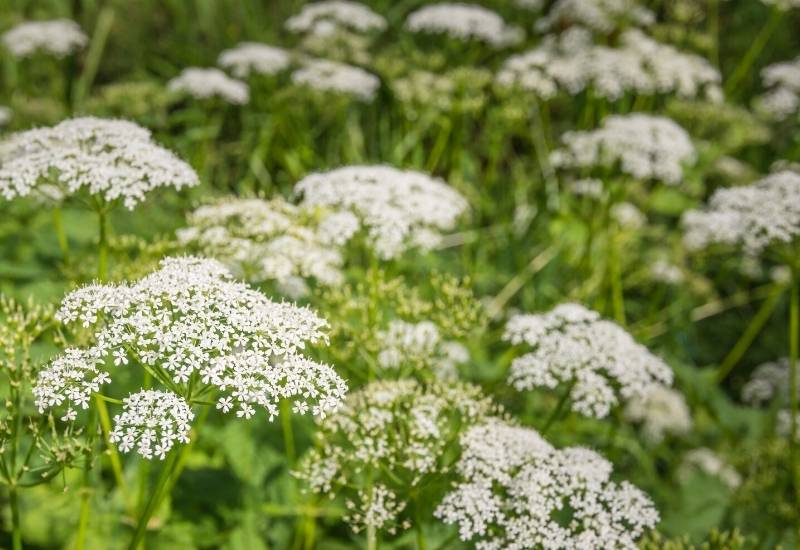
If the biennial only blooms the second year, it is monocarpic. They mainly used for foliage the first year, and the bloom is the main focus the second year.
Foxglove and hound’s tongue (Cynoglossum officinale) belong to these categories.
But there is another group…
Facultative Biennials
Facultative biennials have the potential to complete all their life cycle in two years, but they can do it over a longer time.
Basically they will only live two years if the conditions are right, but if they don’t they can hang around a bit longer… Foxglove, thistle and wild carrot are among these.
I’ll give you an example; you plant foxglove in a corner where it cannot grow enough and root enough…
Well, you’ll just have to wait a bit longer to see it in bloom and it may even be a smaller one. On the other hand it will live longer than 2 years.
Gardening with Biennials
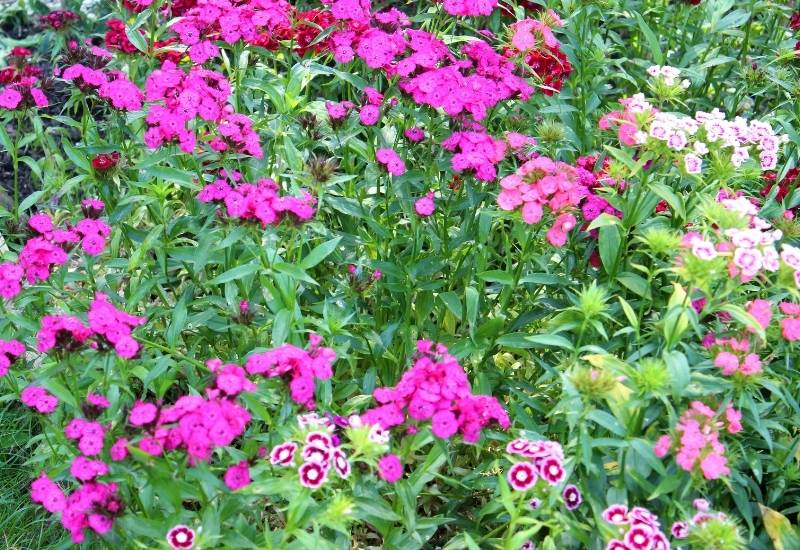
Biennials have many of the advantages and uses of annuals, so, you can use them for most of the same reasons. But in top of those…
Annual, Perennial and Biennial Beauties
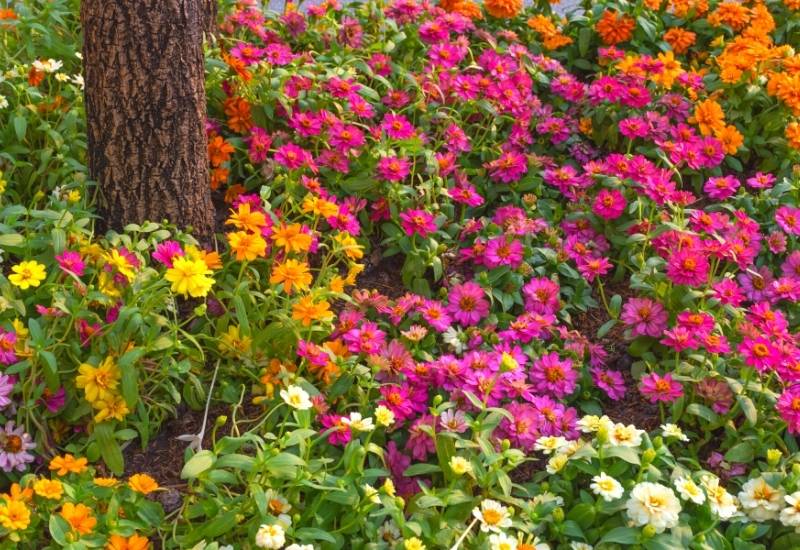
Well done! Now you know everything about annuals, perennials and biennials. You can now read all the complex descriptions you find in magazines, books or on plant labels…
But you can also use them appropriately and creatively in your garden.
So, no more worries about technical words and a lot of fun with plants that live one, two three or even, well – 12,000 years!

Written By
Amber Noyes
Amber Noyes was born and raised in a suburban California town, San Mateo. She holds a master’s degree in horticulture from the University of California as well as a BS in Biology from the University of San Francisco. With experience working on an organic farm, water conservation research, farmers’ markets, and plant nursery, she understands what makes plants thrive and how we can better understand the connection between microclimate and plant health. When she’s not on the land, Amber loves informing people of new ideas/things related to gardening, especially organic gardening, houseplants, and growing plants in a small space.
